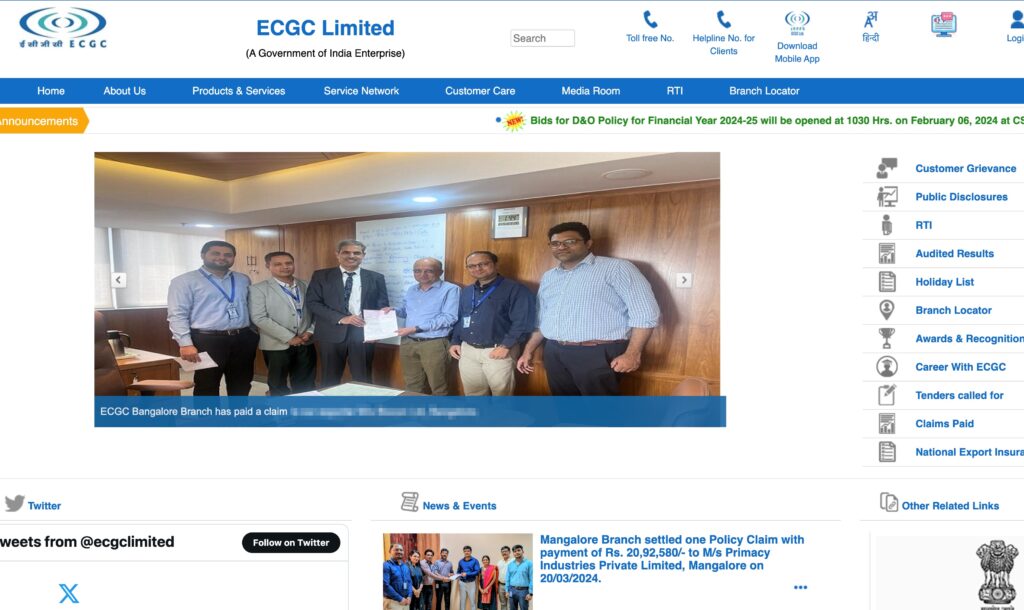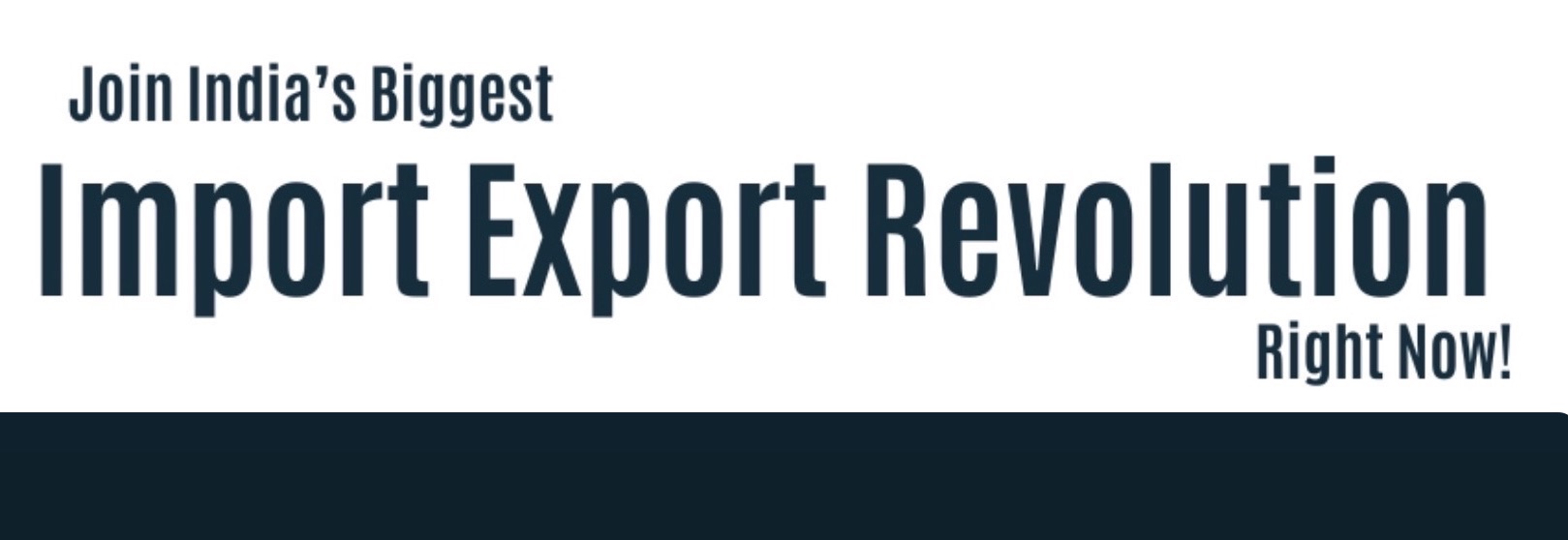I. Brief overview of the import-export industry.
If you don’t know where to start, this is where we have covered all the fundamentals of how to start import export business in detail!
India’s import-export industry, rooted in centuries-old trade routes, is now a major global player. Diverse products, including textiles, pharmaceuticals, and automotive components, contribute to a robust export portfolio.
Crude oil, machinery, and electronics are among the country’s notable imports. Key trade partners span the globe, fostering economic ties worldwide.
Government bodies like DGFT and the Ministry of Commerce regulate policies to promote exports and ensure compliance. Despite challenges like regulatory complexities and logistical hurdles, the industry drives significant economic growth and job creation. Positioned for further expansion, India’s import-export sector remains vital for global trade dynamics and economic prosperity.
India comes in the top 10 exporter countries of the world and these numbers are rising every year. India ranks 9th when it comes to import numbers.
II. Importance of understanding how to start an import-export business in India.
Starting an import-export business in India holds immense significance due to its potential for global market access, diversified revenue streams, and contribution to economic growth.
It offers entrepreneurs, business owners and traders opportunities to tap into international markets, capitalize on India’s rich resources and skilled workforce, and foster innovation and competitiveness. Import-export businesses drive job creation, foreign exchange earnings, and technological advancements, propelling India’s position as a key player in the global economy.
Moreover, they facilitate cultural exchange, diplomatic relations, and mutual prosperity, reinforcing India’s role as a vibrant hub for international trade and commerce.
III. Why Choose Import Export Business over others?
There is a general perception that the Import Export business is very complicated and has many dependencies to be profitable. But in reality, every business is not as simple as it seems in the first place. Before starting any business, it is necessary to know the basics about it and have someone who can answer your questions.
To make your business successful you will definitely need a hand-holding support of an experienced or seasoned businessman or a community along with your knowledge.
There are many known and unknown factors that are to be considered to tackle in real time. e.g. understanding the government’s policy, market’s demand and supply numbers, current trade practices, opportunities, business setup cost, marketing efforts required, working capital, target markets, products, profit, risk and Return of Investment etc.
In the Import Export business also, it is important to understand the right opportunities at the right time! The whole world is looking forward to India as a global supplier in merchandise as well as service sectors. The Indian government also has set an export target of USD 1 Trillion and is very confident about achieving it in the next 3 years.
1. Global Market Opportunities:
Considering China’s strategy to expand into work marketing and considering geo-political strategies that have been adopted by China, the world is not willing for Chinese Products. e.g. The USA has imposed 25% import duty on Chinese products with the intention to reduce Chinese import.
2. Diverse Product Range:
India exported a whopping 10808+ products last year as per a government report. It means India has a huge potential to sell its products from all sectors worldwide like China.
Statistically, the World’s Total Population of 750 Cr, more than 60% i.e 400 Cr is around us.
We are trading more with neighboring countries. So we at Federation suggest to new exporters to start with Asian markets which are relatively easily accessible from a cultural and cost point of view.
3. Profit Potential:
Understanding demand-supply of a product / products, finding a genuine buyer, covering the risks are very important. Export businesses offer lucrative profit potential by tapping into global markets, allowing for higher profit margins due to increased demand and favorable pricing dynamics.
With the ability to access diverse consumer bases and capitalize on competitive advantages, export ventures can yield substantial returns on investment and drive sustainable growth.
IV. Indian Government Policies to start import export business
The Indian Directorate General of Foreign Trade (DGFT) is a regulatory body under the Ministry of Commerce and Industry responsible for formulating and implementing foreign trade policies. It manages licensing and regulation of imports and exports, facilitates trade promotion initiatives, and ensures compliance with international trade regulations.
The Ministry of Commerce and Industry oversees India’s trade and commerce activities, formulates policies to promote economic growth, and fosters industrial development, including export promotion and trade facilitation efforts coordinated with DGFT.
There’s a growing global interest in Indian products, partly due to their quality, cost and uniqueness. This creates a favorable market for new and established Indian brands.
India’s “Make in India” has been a very successful strategy for India. One example is the mobile Smartphone industry, India which was one of the largest importers of mobile phones has become one of the largest exporter of mobile Smartphone in the world. So the Indian Government knows our strength and what we can achieve as a nation. Now the Indian Government is advising “Make for the World”, whoever you are, farmer, student, trader, manufacturer, service provider, artist, educator, you must develop a product or service which is world class and sell it to the whole world.
India’s Trade Deficit is $267+ Billion and it is rising. Country is spending its foreign reserve on imports which it could have used for infrastructure development. Hence the government of India is promoting ‘Make In India’ and trying to reduce imports. On the other side, the government is offering many export promotion schemes to achieve the export target of $1 Trillion.
V. Export Promotion Schemes
To help you to start import export business in India, the Government of India has been very proactive in pushing export revenue to the set targets and making sure export can be done as swiftly as possible. There are certain schemes made available and a few of them are as follows
| Tax Support : There is No GST on exported goods. This is a benefit to exporters directly. | |
| Risk Support : Govt is supporting exporters in risk management by offering insurance. | |
| Funding Support : In export business the government offers loans at subsidized rates. | |
| Subsidy Support : Government has offered export incentives on 8000+ products. |
VI. Misconceptions of Import Export Business
Import Export is one of the best Business option but people have following misconceptions about this business
- It is complicated.
- It is very risky.
- It needs huge money.
- You need to be expert in English.
Hence people lack knowledge, skills, confidence and a positive environment to make a decision and start. That’s the reason people need training and handholding support and we are solving this problem.
VII. New Exporters’ Challenges
Initially, many businessmen think that export business is full of risks and uncertainties though it’s a highly profitable business which needs heavy investment, but in reality it’s not exactly like that! But it also does not mean that it’s easy and can be done without getting involved into too much risk.
There are certain factors that are required to be considered while doing export and if the right steps, procedures are not followed, if certain deals are not cracked with smartness and wisdom, it might go badly wrong.
A few critical points to be considered for the same are
- Investment Vs Profit
- Business Setup
- Market Analysis
- Buyer Finding

VII. Import Export Blueprint
Mr. Abhijit Shinde, Founder of Import Export Federation started export with Livestock. He traded horses to Sri Lanka. Livestock export is one of the most complicated export types and after doing it, he started exploring the other options he had.

Being from a farming background, he also exported agricultural products and after starting tasting success in export, he started thinking about how the entire process can be made simple by removing complexities by easy baby steps and ensuring how unnecessary risks can be mitigated. By applying the export practices over the period of time for multiple types of exports, he discovered “The Import Export Blueprint”.
The revolutionary export blueprint assures success in import export business, if implemented properly. Hundreds of exporters started their export journey successfully only because of the blueprint. “The New Exporter Blueprint” is a 10 step Business Model which is developed after a lot of research and analysis in this industry.
VIII. Import Export Functions
Function 1. Legal and Compliance:
A company formation is mandatory for doing import and export business. The company can be any one of the following
- Proprietorship
- Partnership Firm
- LLP
- Private Limited
Depending on the option you select, the document list may change for different types of companies. Typically, all KYC documents are mandatory like Aadhaar Card, Pan Card, Photos, Address of Business. If the business address is a rental place then you will need a registered rental agreement. GST is mandatory for the business.
Nowadays, the government has made the GST process very strict and a lot of validations are done for the same. So it is very important to ensure you have enough leading time for the entire process of company formation and GST registration to get started.
Depending on the type of the product you are exporting, documentation varies. Here is a list of documents that is required
- Bill of Lading (BL) – The most important document!
- Commercial Invoice cum Packing List
- Shipping Bill/ Bill of Export
- Proforma Invoice
- Export Order or Purchase Order
- Certificate of Origin
- Bill of Exchange
- Letter of Credit
- Inspection or Quality Check
- Phyto-Sanitary & Fumigation Certificates
There are also other documents that are required. The detailed list of documentation is given in this blog post.
Function 2. Logistics and Shipping:
For new exporters, understanding logistics and shipping is crucial for successful international trade. Key considerations include selecting reliable freight forwarders and shipping carriers, negotiating favorable terms, and ensuring proper packaging and labeling of goods.
Familiarity with shipping documentation, such as bills of lading and commercial invoices, is essential, along with knowledge of Incoterms to clarify responsibilities and costs.
Efficient supply chain management, including tracking shipments and managing inventory, helps prevent delays and ensure timely delivery. Building strong relationships with logistics partners and staying informed about shipping regulations and best practices are vital for navigating the complexities of global logistics effectively.
Here are several key components that are crucial in logistics and shipping for the new exporter to consider.
- Freight Forwarders
- Shipping Carriers
- Packaging and Labeling
- Shipping Documentation
- Incoterms
- Supply Chain Management
- Customs Clearance
- Inventory Management
- Tracking and Visibility
- Compliance and Regulations
Function 3. Product Selection:
India exported a whopping 10808+ products last year as per government report. It means India has a huge potential to sell its products from all sectors worldwide like China.
To select products from India for export, follow these steps:
A. Market Research : Identify target markets and conduct thorough market research to understand demand, competition, and regulatory requirements.
B. Product Suitability: Evaluate products based on factors like quality, uniqueness, and market demand. Consider cultural preferences, trends, and potential for differentiation.
C. Feasibility Analysis : Assess production capacity, cost-effectiveness, and scalability of selected products. Analyze export potential, profit margins, and risks associated with each product.
D. Compliance and Regulations : Ensure the products you have selected comply with international standards, regulations, and trade agreements. Understand export documentation, tariffs, and import restrictions in target markets. Do note that different products need to have different compliances so product-to-product licences may change.
The Govt of India as well is very proactive when critical situations come and it also bans certain products for a certain period of time. There are multiple factors from inflation control, demand-supply, geo-politics for banning the products for export but it is very important to keep yourself updated about such market conditions to be on a safer side while products are being selected!
E. Logistics and Distribution : Consider logistical factors such as transportation, packaging, and delivery timelines. Evaluate shipping options and logistics providers to ensure efficient and cost-effective distribution.
While considering logistics, please note that the cost factor is going to impact the profits so depending on the products, whether it needs deep freezing, or control of temperature in a special way, planning ahead of time is going to help you a lot ahead of time.
At different levels, we have noticed some malpractices of logistics players so identifying trustworthy and genuine logistics and distributor partners is the key.
F. Market Entry Strategy : Develop a comprehensive market entry strategy, including pricing, branding, and promotional activities. Build relationships with potential buyers, distributors, and partners in target markets. Please keep in mind, it’s a trade at the end of the day! So, every strategic move, and decision of selecting partners while completing the complete cycle of export is going to impact cost, eventually profit. It’s always good to have the support of a community in such cases.
G. Continuous Monitoring : Monitor market dynamics, consumer preferences, and regulatory changes. Adapt strategies and product offerings based on feedback and evolving market trends. There are risk factors but they can be mitigated with practicing the right processes and continuous monitoring.
By following these steps, you can effectively select products from India for export and capitalize on international market opportunities.
Function 4. Market Research & Marketing
The market fluctuates every day as per demand supply at that moment in time. We strongly advise you to understand the market in-depth and ensure you know the pulse of the market. It is very common like you are an exporter, there are other exporters in the market as well who are simultaneously, proactively trying to figure out what can be done with that current market condition. These are all important steps not just to start import export business in India but also to survive and make it highly profitable!
In-depth market understanding plays a very pivotal role in your success and over the years, we have identified how the entire things can be done with minimal yet enough efforts.
Our JNPT tour covers the end-to-end backend exposure practically and you get access to see the port, processes, how officers work etc.
Our Dubai tour covers the end to end front end exposure practically and you get to interact with actual buyers, importers in the markets like Al Aweer, Al Ras Commodity Market, FMCG, Processed Food, Confectionery Wholesalers, Cattle Feed wholesale market and much more.
Market research for export business involves several steps to identify target markets, understand consumer preferences, assess competition, and evaluate regulatory requirements. Here’s how to conduct market research effectively.
A. Identify Target Markets: Determine the countries or regions where you intend to export your products. Consider factors such as market size, growth potential, economic stability, and cultural compatibility.
B. Understand Market Trends : Analyze industry reports, trade publications, and market studies to identify trends, opportunities, and challenges in target markets. Look for emerging consumer preferences, technological advancements, and regulatory changes.
C. Assess Consumer Demand : There is no replacement meeting the actual market and buyers in the actual market. Conducting surveys or focus groups to gather insights into consumer preferences, purchasing behavior, and product preferences does help but it is tricky. Understand the needs, preferences, and pain points of your target audience.
D. Analyze Competition : Identify key competitors operating in your target markets. Analyze their product offerings, pricing strategies, distribution channels, and marketing tactics. Identify gaps in the market that your products can address. Especially, this is important when you start import export business!
Function 5. Banking
Banking is critically important to ensure the security and legitimacy of all financial transactions that happens between importer and exporter. It is important to understand all banking operations and sequence of banking operations.
Here is how Banks help you with Import and Export
- Exporter Account and it’s operations
- EEFC account and operations
- Document Management
- LC receipt
- LC issues
- LC Confirmation
- LC Advice
- Pre-shipment and post-shipment schemes
- Handing Govt. subsidies
Bank charges commissions and you should have a complete clarity of how much the bank charges commission, what are dollar (USD) conversion rates etc.
Please note that all the taxations, duties, GST, etc., are done through the same account, and as your turnover increases, the balance sheet plays a pivotal role in funding! It is important to avoid any kind of cash transitions as they are neither allowed and nor give you long term benefits. If you start import export business keeping long term plan, clear banking adds a lot of value to your business growth!
Function 6. Risk Management
Where there is a business, there is a risk. But wiser businessmen always consider risks to be mitigated or managed. Typically in import and export business, there are two types of risks
- Cargo (Goods) Risks
- Credit period (Buyer) Risks
Cargo risks usually cover losses due to vessel delays, accidents, drowning, temperature issues, product mishandling, and mismanagement through marine insurance.
Credit risks usually covers buyer’s misbehaviour issues like denier of container, not turning out to recieve container, not payment remaining payments. Though at the time of PO (Purchase Order) you may work out payment terms like DA (Document Against Acceptance) or DP (Document Against Payment) or any other that has been mutually agreed upon, there may be scenarios where credit payment terms are not completed. These kinds of risks can be covered in this.
ECGC plays a pivotal role here and helps you to identify good buyer, defaulter, by doing buyer verification
ECGC role
- Buyer verification
- Assigning credit limit
- Issuing insurance policy
- Report payment defaulter
- Investigate cases
- Pay insurance
- Buyer blacklisting
Please check ECGC Website for more details.

Function 7. Finance
Yes, import export business is capital intensive business, but it does not mean that if you do not have capital, you can’t do import export business at all! Other than personal savings, there are multiple options for finances are available. However, it is very important to identify how the finance is handled by you and risks are mitigated in such a way that, even in the worst case, the finance that you have managed, does not go in vain!
Here are more options available
- Government Schemes
- Trade Finance
- Partnership or Joint Ventures
- Crowdfunding
- Supplier Credit
- Bank Loans
We will have another detailed blog post about financing your import export business!
Function 8. Networking & Relationship Building
It is needless to say that any business requires a good connectivity between businesses and it helps in every possible way. Especially, for import export business, building relationship plays a super pivotal role! You tend to connect buyers or sellers for the very first time and intend to deal in large volumes with higher ticket sizes. There has to be some kind of bridge to know the person you are dealing with. There are legit mechanisms through which verifications can be done, but at the end of the day, trust prevails the highest importance beyond just technical verifications and paperwork!
Other than that, here are important pointers to ensure why networking and relationship building is important
- Build Trust and Credibility
- Get Information and Insights
- Resource Sharing
- Risk Mitigation
- Negotiation Advantage
- Get Market Insights
- Access to Resources
- Get more brand visibility
In fact, this is where Import Export Federation comes into picture! Over the years, we have been training and training and connecting many overseas buyers, resellers, manufacturers, investors, logistic partners, banking partners and ensuring there is a trust in between members of federation! This is where this comprehensive guide will help to to answer your question … “how to start import export business!”
Do consider joining Import Export Federation if you want to harness yourself with a power off networking and relations!



 58,000+ Members
58,000+ Members  1,171+ Reviews
1,171+ Reviews 


